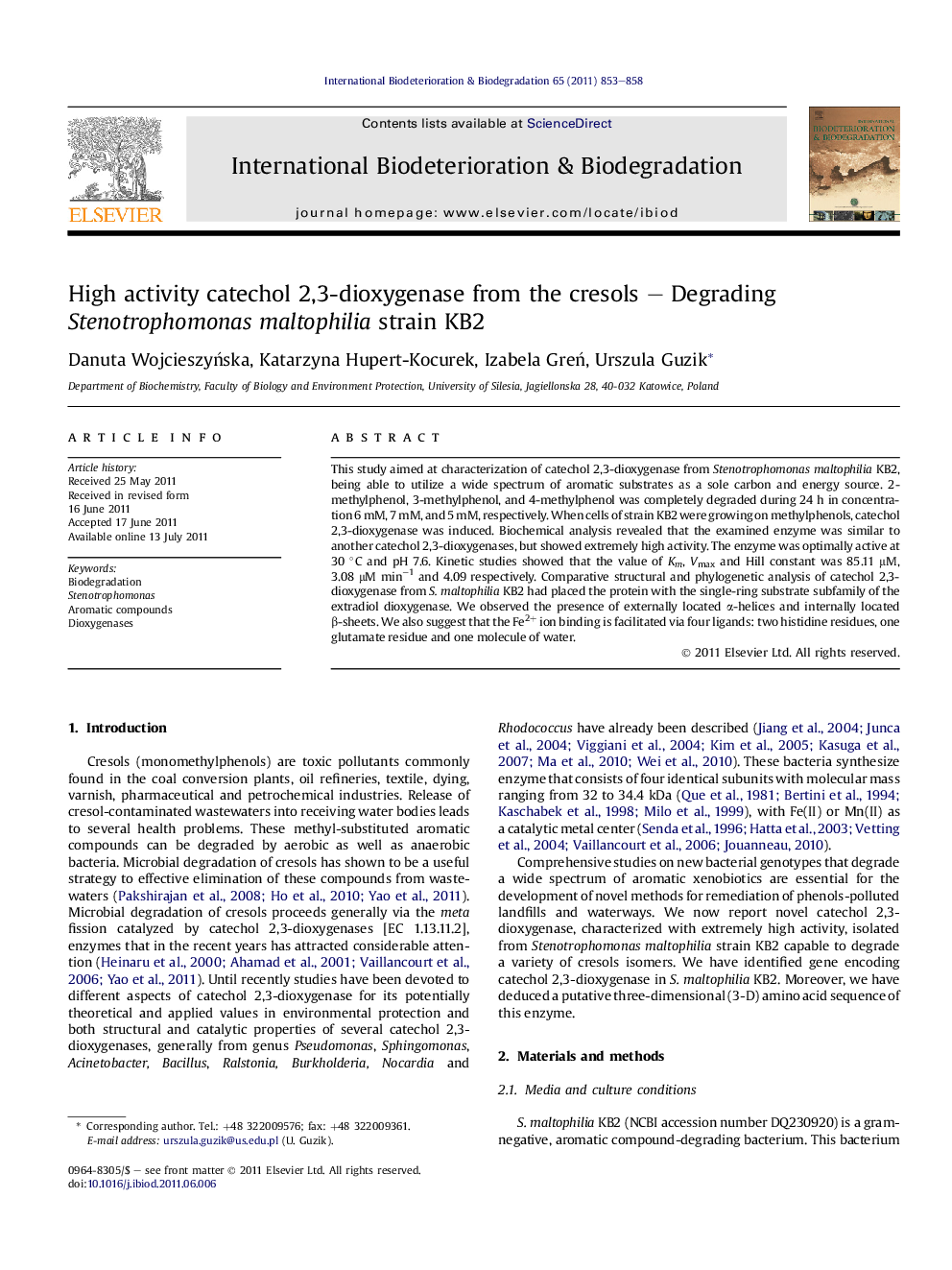| Article ID | Journal | Published Year | Pages | File Type |
|---|---|---|---|---|
| 4365341 | International Biodeterioration & Biodegradation | 2011 | 6 Pages |
This study aimed at characterization of catechol 2,3-dioxygenase from Stenotrophomonas maltophilia KB2, being able to utilize a wide spectrum of aromatic substrates as a sole carbon and energy source. 2-methylphenol, 3-methylphenol, and 4-methylphenol was completely degraded during 24 h in concentration 6 mM, 7 mM, and 5 mM, respectively. When cells of strain KB2 were growing on methylphenols, catechol 2,3-dioxygenase was induced. Biochemical analysis revealed that the examined enzyme was similar to another catechol 2,3-dioxygenases, but showed extremely high activity. The enzyme was optimally active at 30 °C and pH 7.6. Kinetic studies showed that the value of Km, Vmax and Hill constant was 85.11 μM, 3.08 μM min−1 and 4.09 respectively. Comparative structural and phylogenetic analysis of catechol 2,3-dioxygenase from S. maltophilia KB2 had placed the protein with the single-ring substrate subfamily of the extradiol dioxygenase. We observed the presence of externally located α-helices and internally located β-sheets. We also suggest that the Fe2+ ion binding is facilitated via four ligands: two histidine residues, one glutamate residue and one molecule of water.
► Ability to degradation of all cresols by KB2 strain was reported. ► 3-D structure of catechol 2,3-dioxygenase (C23D) from KB2 strain was presented. ► C23D belongs to single-ring substrate subfamily of the extradiol dioxygenase. ► C23D is similar to the other ones, but with extremely high activity.
